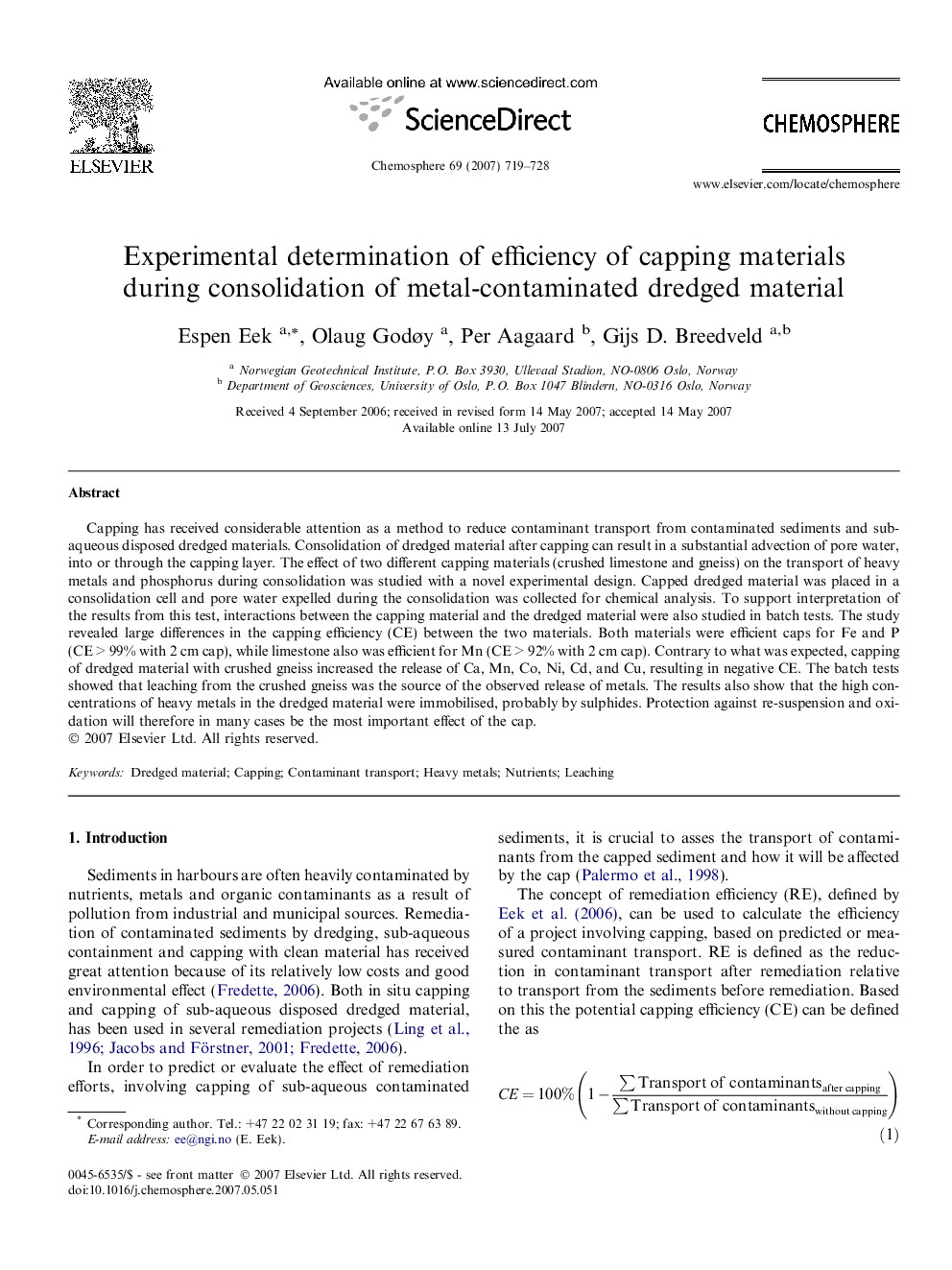| Article ID | Journal | Published Year | Pages | File Type |
|---|---|---|---|---|
| 4414733 | Chemosphere | 2007 | 10 Pages |
Capping has received considerable attention as a method to reduce contaminant transport from contaminated sediments and sub-aqueous disposed dredged materials. Consolidation of dredged material after capping can result in a substantial advection of pore water, into or through the capping layer. The effect of two different capping materials (crushed limestone and gneiss) on the transport of heavy metals and phosphorus during consolidation was studied with a novel experimental design. Capped dredged material was placed in a consolidation cell and pore water expelled during the consolidation was collected for chemical analysis. To support interpretation of the results from this test, interactions between the capping material and the dredged material were also studied in batch tests. The study revealed large differences in the capping efficiency (CE) between the two materials. Both materials were efficient caps for Fe and P (CE > 99% with 2 cm cap), while limestone also was efficient for Mn (CE > 92% with 2 cm cap). Contrary to what was expected, capping of dredged material with crushed gneiss increased the release of Ca, Mn, Co, Ni, Cd, and Cu, resulting in negative CE. The batch tests showed that leaching from the crushed gneiss was the source of the observed release of metals. The results also show that the high concentrations of heavy metals in the dredged material were immobilised, probably by sulphides. Protection against re-suspension and oxidation will therefore in many cases be the most important effect of the cap.
